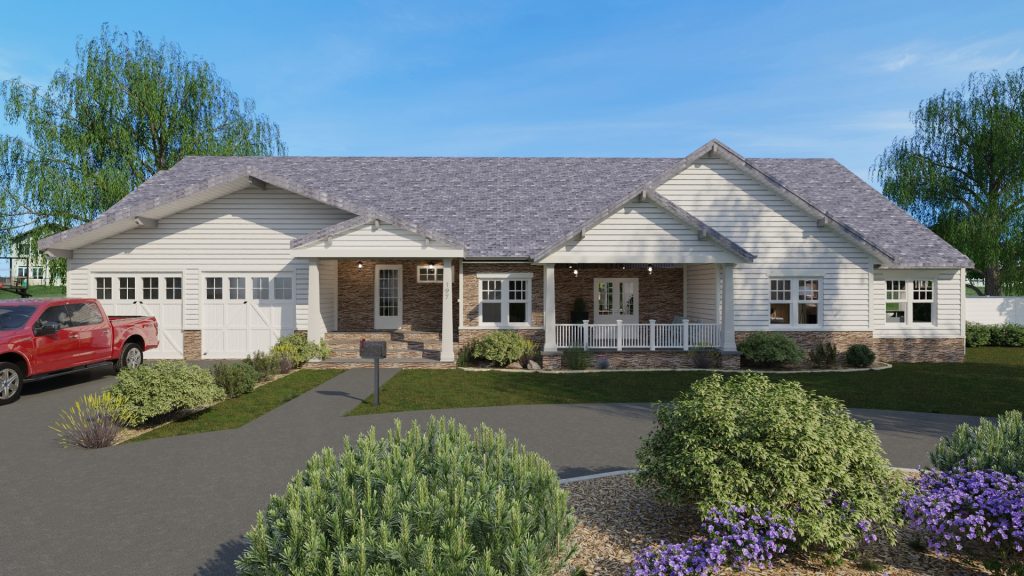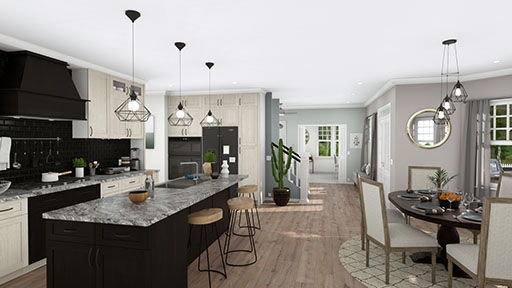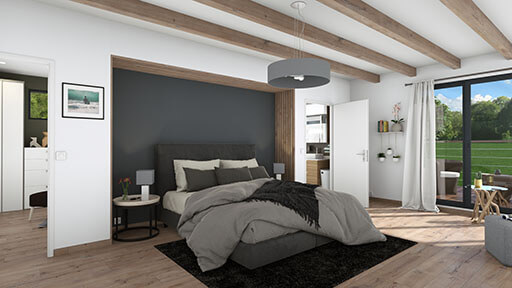There’s only one part of home building that is more important than the actual construction. It’s called pre-construction, and it’s an essential phase of any construction project that lays the groundwork for a project’s success.
Get part of the pre-construction phase wrong, and you risk getting the entire project wrong and losing business. But get it right, and you’re set up for success and business growth.
Here’s what you need to know about the pre-construction process, including the steps you need to follow every single time.
What is Pre-Construction?
What is pre-construction? As the name suggests, pre-construction is what comes before construction. It’s the planning phase, in which you, the home designer, and the client work together closely. It’s all about making sure everyone is on the same page with the vision for the completed project.
Pre-construction activities include refining the design of the home, establishing timeline expectations, providing cost estimates, and troubleshooting any potential construction issues. This phase typically involves several meetings with designers and clients, as well as a lot of back-and-forth communication.
To put it in construction terms, the pre-construction phase is like the foundation of a home. It sets up the stability of the entire project.
Why is the Pre-Construction Phase Important?
We know what the process is, but why is solid pre-construction management important?
There’s no overstating it: pre-construction is essential to the success of any home building project. In this phase, you begin by evaluating the home design for constructability and refining it if you encounter any potential problems. Now, imagine if you didn’t identify a problem that was going to render the entire project impossible to build?
Then, of course, you have the benefit of setting expectations. Any construction professional can tell you that client expectations can quickly get out of hand during construction. It’s understandable — they’re excited about their new home — but in pre-construction, you can mitigate this issue by laying out clear timelines and cost estimates.
On the nuts-and-bolts side of things, you also find all your subcontractors and source equipment and building materials as part of the pre-construction process. Taking care of these essential to-dos before construction begins saves on time, money, and stress.
Main Outcomes of Pre-Construction Planning
If you engage in all of the necessary pre-construction activities, you should expect the following outcomes:
- Scope. All involved parties will understand the project in its entirety, including who is responsible for which tasks, the overall goals, and the plans to achieve them.
- Budget. No one should have any questions about the estimated project budget after pre-construction is over. This is the time to discuss the costs of materials and labor, how to stay within the budget and what to do when the project may exceed the budget.
- Team. Which of your employees will build this home? Who will oversee them? And who will the subcontractors be? All of these questions must be answered in the pre-construction process.
- Timeline. Establish more than just a completion date during the pre-construction phase. Set specific deadlines for each phase of the home building project so no one is left in the dark and everyone is accountable.
- Details. There are a million little details involved in every construction project. During pre-construction, you should attempt to sort out as many of these as possible so you can focus on the actual construction later. Look at details like layout, building materials, the overall style of the home, and more.
11-Step Pre-Construction Process
Pre-construction planning is an incredibly complex part of construction as a whole. It’s easy to get overwhelmed when you look at the task in its entirety. But if you break pre-construction down into manageable steps, it’s easy enough to handle.
Here are 11 essential steps of the pre-construction process:
1. Construction scope
Before you do anything else, you need to establish the scope of the project you are planning for. Scope can mean a lot of different things, but in pre-construction, scope refers specifically to defining the following:
- Exactly what the project is (home, office, cabin, etc.)
- The size of the lot and the structure
- The limitations of the project
- The objectives that, if met, will make the project a success
Many of these points may seem obvious right from the beginning, but it’s still important to write them down and discuss them in detail with all project stakeholders.
2. Construction team
Some of your team members are best suited for specific types of projects. Some work well together, while others need to remain on separate projects. As the leader of your construction business, it’s up to you to assemble the team that will be best equipped to complete the project on time, within budget, and with the high degree of quality your customers expect.
It’s important to select the team members early on in pre-construction because they will then become involved in many of the remaining steps in the pre-construction process. You can’t — and shouldn’t — do it all alone, and if you pick the right team, you don’t have to.
While you won’t hand-select subcontractors at this point in the process, identifying several subcontractors who have what it takes to complete the various parts of the project you will need them for is essential at this stage. With a strong list of subcontractors who have expressed interest in the project at hand, you can prepare bid packages and rest assured that the jobs will get done.
3. Construction budget
Budget is key throughout any construction project, but it’s particularly important in the pre-construction stage. Why? Because this is the first time the customer will get a confirmed expectation of what they’re going to have to spend, and it sets the tone for the rest of the project.
Establishing the budget is tricky. You have to consider a wide variety of factors, including the costs of labor, various materials, transportation, equipment purchases, rentals, and more. Give an estimated budget range instead of an exact figure. That way, you have some wiggle room without immediately disappointing the customer.
4. Construction development plan
Nothing gets done without a plan — and that includes homebuilding. Pre-construction is the perfect time to start planning out the various phases of the actual construction of the building. You need to lay out what has to be done to turn the building materials into the actual building, dividing it all into defined stages with hard deadlines.
Consider the following phases in your construction development plan:
- Site preparation and foundation
- Rough framing
- Electrical, plumbing, and HVAC
- Insulation
- Interior fixtures and drywall
- Outdoor walkways and the driveway
- Flooring and countertops
- Exterior fixtures
- Roofing
5. Construction design

Depending on exactly what type of construction business you operate, your client may or may not come to you with a rough home design. If you’re a design-build operation, you will be completely responsible for the design, but other construction businesses may work with designs by third parties.
In either case, you need to be involved in the design process as much as possible. Perhaps most importantly, you need to assess the design for constructability — meaning whether it’s possible to build it at all and, if it is possible, to stay within budget while doing so.
Should you need to make changes to an existing design or design a home completely from scratch, you don’t have to sit down at a drafting table in this day and age. A comprehensive and user-friendly home design software like Cedreo can help you present designs and design changes to clients within hours, receive quick and helpful feedback, and make changes in minutes.

6. Construction materials
Where are the actual building materials going to come from? What are they going to be? How much will they cost? If you don’t answer questions like these during the pre-construction process, you are almost certainly going to run into problems later on. Answer the questions and order the materials during this step.
7. Construction permits
Assessing which permits the project will require and acquiring them is essential during pre-construction. That’s because a permitting issue can bring construction to a grinding halt and, in the worst cases, make the project impossible to complete. Find out which permits you will need and how long it will take to get them. Then, start the process of acquiring the permits.
8. Construction scheduling
You have already defined the phases of the construction process. Now, it’s time to schedule everything. This pre-construction step will require working with your team to schedule the phases of the project and reaching out to subcontractors to make sure they will be able to complete their work at times that work for the project. You will also need to consider permitting, inspection, and customer review as you make the project schedule.
9. Construction essential tasks
With the major points covered in the previous steps of the pre-construction process, you will feel a lot of relief, but you won’t be done yet. Dozens of smaller — but still essential tasks — remain. This is the time to get them done. Here are some examples:
- Soil testing
- Rounding up outstanding permits
- Submitting the construction plan to the city or county
10. Construction inspections
While the bulk of inspections on any home construction project will occur during or even after construction, you still need to address a handful of inspections during the pre-construction phase. Each municipality has its requirements for pre-construction inspections, but common types include surveying of the condition of the property, environmental impact analyses, and building plan inspections for safety and adherence to local ordinances.
11. Project communication

Communication is the final step of the pre-construction process, but it really should be a part of every one of the previous steps — and continue into the actual construction phase. In pre-construction, communication is essential. Clients, subcontractors, designers, city officials, and various other parties need to know what’s going on and how it impacts them.
One particularly important part of pre-construction communication has to do with the design of the home itself. You need to be able to communicate how the completed home will look, including any changes to the original design or possible additions. Because many people struggle to visualize completed homes when looking at flat building plans, it’s important to provide a visual aid.
There are a few ways to do that, but many of the more traditional methods involve expensive third-party rendering companies that take a long time to do their work and can’t easily make design changes. The alternative is a home design software like Cedreo.
Cedreo enables you to quickly design a home in 2D and 3D — complete with furnishings and decorations if you choose — and share it with the client. If you get feedback, you can make the change in minutes, not days. That way, you have a happier client, a faster pre-construction process, and a more successful project overall.

How Long Does The Pre-Construction Phase Take?
The scope of the project and the details of your pre-construction schedule will determine how long the pre-construction phase takes. Experienced teams can complete pre-construction for simple projects in as little as a couple of weeks. More complex projects may take up to three months.
In any case, remember to devote enough time to complete every required step of pre-construction. No matter how long it takes, pre-construction adds value and prevents disaster, so it’s always worth the time.
Pre-Construction Planning Leads to Post-Construction Success
What you do early in any home building job is going to have a huge impact on how the rest of the project goes. That means pre-construction is arguably the most important step in any project.
That puts the pressure on, but if you take the right steps and remember to be thorough and detailed throughout, pre-construction — and the rest of the project — should be a breeze.
To make it all even easier, use Cedreo, a leading home design software, to help clients visualize the project during pre-construction, gather feedback, and, ultimately, close more home building deals faster. Try Cedreo for free today.



